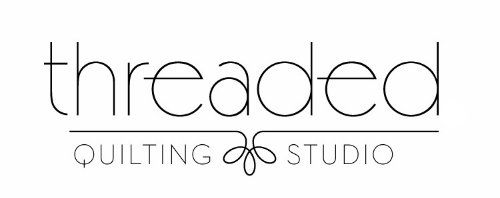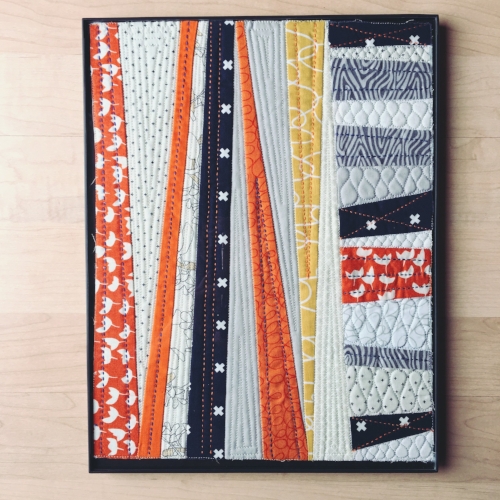I had the opportunity to test the latest pattern in the Sew Mojo series (#2) this last week. Thanks Suzy! If you haven't already, go check out the pattern listing that shows multiple variations and colorways of this pattern.
I have the wall space in my house already picked out to hang this series when complete, and I knew I wanted to use the same color palette for the second mini as I did the first. In fact, I used many of the same exact fabrics which should make for a very cohesive look in the end.
The emphasis is on composition in this second pattern exercise. Having next to no art training, I appreciated this mini lesson as it applies to quilting.
The pattern builds on the skills exercised in the first mini lesson and adds a healthy dose of intentionality without being oppressive in the slightest. In fact, I love how the pattern uses some guidelines but then encourages you to follow your creative impulses. (Which I was happy to do!)
Part of that creative impulse was to echo a design element of the first mini (above, left) in the second mini (above, right). Whereas the shorter wonky strips were going vertically along the side of the first mini, I wanted to play off of that idea and add wonky strips going across the top of the second mini.
Ultimately, I wanted the focus of the piece to remain with the orange center square, so in order to minimize the boldness of the strips along the top, I added matchstick quilting to those areas to unify that space and to downplay it.
Once again, it brought me so much JOY to add some hand stitched lines to the mini quilt. Is embroido-quilting a thing? Because the thread is going through the top and batting (no backing necessary if displaying in a frame), it's "quilting". But since I'm also stitching with 3-ply embroidery floss and hunting and pecking my way around, it's kind of like embroidery, too. I'm good with the name-combo in any event. :)
In the areas where I added hand quilting, I marked my lines using a very faint white marking pencil by Sewline. I have an ever-growing list of tools that I use and personally vouch for, you'll find the details of the marking pencil included.
In keeping with the style of the first mini, I used machine quilted lines in the "background" areas and hand stitching in the foreground fabrics.
What can I say? Always perfectly imperfect!
sunshine + quilts = cat magnet
I hope that you'll give Sew Mojo #2 a try! It's an absolute blast to work out your creativity muscles, learn a new approach to design, and have a finished piece of art in the end!



















































































